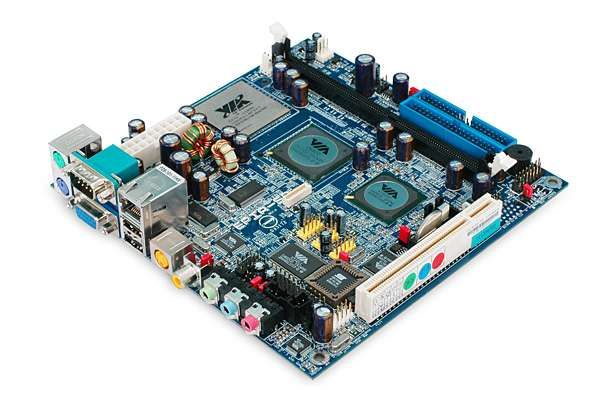
VIA has always been a roller-coaster ride of bugs and features, paper launches and missed markets, and their EPIA boards are no different. Originally intended for use by embedded system integrators in building custom computing options for things like factory machinery and kiosks, hardware enthusiasts (henceforth known as “geeks”) have risen to the challenge of using these strange little boards for a variety of purposes. Most commonly seen in routers, low-power file servers, and (more recently) the HTPC scene, the EPIA platform has firmly planted itself in the most niche markets it can find.
As for me, I love small computers & silent computing. Most of the fun I have with computers is trying to figure out how to get my systems smaller, quieter, or both. Of course, I've been interested in VIA's EPIA line for years, and have been purchasing their hardware since mid-2004. My first notable adventure with EPIAs was with their TC-class boards; each of those eventually went no-post, presumably due to the built-in power supply on the boards. I then switched up to the MS-series, and finally came to rest most recently on the SP platform.
Needless to say, the new EN-series EPIA boards interest me. However, I've started wondering recently if spending $250+ on each of these boards is really the best way to show my wallet who's boss. So, in light of that gentle mental pressure, I decided to geek out and spend my free time benchmarking the hardware that I had, in the best TR-fashion that I could. I didn't feel that it would be fair to compare the EPIA boards' performance to my SN95G5 – AGP vs PCI graphics, S939 A64 vs VIA C3, SATA RAID vs single-drive PATA. so I scrounged some old parts out of the bin and put together a system that I was SURE would be, at most, equivalent to the EPIAs.
I also purchased a range of fanless PCI video adapters. I selected the ATI 9250 (DX8.1, OGL 1.3), Nvidia FX5200 (DX9, OGL 1.4), and XGI V3XT (DX9, OGL 1.5). I could have gone with other versions of PCI cards from each of these manufacturers, but I was aiming for a fanless video solution, and these were the best that each party had to offer. The integrated VIA solutions were never satisfactory for me, but I put up with them. I figured, though, that while I was out to compare the boards' performance, it would also be a swell time to check up on the available video options that were out there. Finally, just for kicks, I wanted to see if there was any performance delta on these video adapters and motherboards when switching from Windows XP to Linux (I had a pet theory that the recent ATI acquisition of XGI might have had something to do with XGI's linux driver team).
With all of that stuff to go over, I've split this review into 3 posts, each attempting to match the TR-style of which we've all grown fond (except the graphs won't be nearly as pretty, as they were made with OpenOffice.Org and my inexpert hand), and each detailing a fraction of the total effort expended in determining:
Are EPIAs really worth it?
Testing Methods
System Performance - Windows - Duron, MS10000, SP13000 - ATI, Nvidia, XGI, VIA
System Performance – Linux – MS10000 – ATI, Nvidia, XGI, VIA
